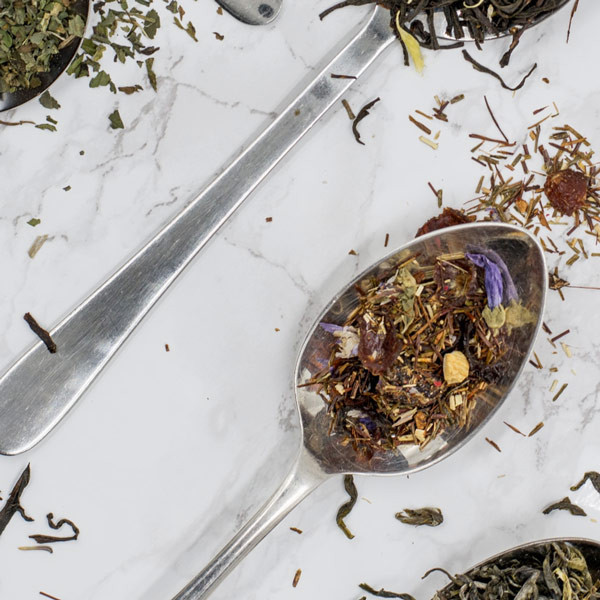Ever wondered why Turmeric is regarded so highly by nutritionists, chefs and health food experts? Why it’s such a potent healer, yet so gentle to our bodies?
Turmeric is the orange/yellow-coloured spice drawn from the root of the perennial Curcuma longa plant that gives Southeast Asian and Middle Eastern dishes their unique character. The name curcuma is derived from the Persian word for saffron, an indication of the similarity of the colour of the two spices.
Familiar to chefs and cooks around the world, the spice’s golden colour is more than just a visually stunning addition to the plate. Its earthy aroma and flavour also adds rich depth to any juice drink or dish. Whether used as part of a curry powder, an antioxidant juice, or as a topping for delicacies such as eggs and fish, it’s as versatile as it is delicious.

But that’s just half the story. For turmeric is also a powerful healer and one of the most widely-used “super” spices around the world.
This is well-known in Eastern medicines and turmeric has been used in these disciplines to treat a number of ailments. Indeed the ancients used the spice as much in a medicinal context as they did for flavour and sustenance. Ayurvedic and Chinese traditional medicine both use turmeric as a cure for inflammation and as a gentle remedy for a number of infections in the body due to its antioxidant properties (1).
It has only been recently that Western society has jumped on board the turmeric bandwagon. However we’ve more than made up for lost time! So much so that turmeric is always in the pick of the bunch when superfoods are mentioned and it’s rare to see a “top ten superfoods” list article that doesn’t contain the benefits of turmeric.
Perhaps the clearest sign of the extent to which the spice has penetrated Australian society is that it now appears in that favourite Aussie meeting place: the cafe! Ask for a turmeric latte next time you sit down for your daily cuppa.
Turmeric is closely related to ginger, that other favourite of the ancients for cuisine and healing and dietary value and contains a range of bioactive compounds that make it such a powerful healing herb. The key is the active ingredient curcumin.
Many scientific studies now back up anecdotal and folk medicine claims of the benefits of turmeric. But what are these properties and how should you introduce turmeric into your diet?
The Benefits of Turmeric
- Anti-inflammatory. The anti-inflammatory properties (3) of turmeric are now well known and people suffering from conditions such as deep vein thrombosis are often referred to a diet that is high in turmeric and ginger.
- Regulate blood sugar. There is promising news for diabetics with some studies showing that one of the spice’s active ingredients curcumin (in conjunction with a recommended diet) helps to regulate blood sugar3. There is evidence that curcumin may also help those with prediabetes — a condition that usually precedes full blown diabetes — from progressing onto the full condition.
- Brain health. Research has pointed to the benefits of curcumin in helping to ward off dementia, mitigate damage from strokes and also help people with Parkinson’s Disease and Alzheimer's(4).
- Improves stiff joints. Turmeric may also be taken to help relieve inflammation and stiffness in joints caused by both rheumatoid arthritis and osteoarthritis. Studies have shown that turmeric’s anti-inflammatory properties prevents joint inflammation3.
- Digestion. Ayurvedic and other traditional medicines incorporated turmeric as part of treatment to improve digestion and reduce bloating in the stomach1.
- Cholesterol. Turmeric’s compound ingredient curcumin has also been shown to be helpful in reducing harmful cholesterol (LDL). It has been shown that turmeric will act to increase the breakdown of LDL in the body5.
Nutrition Australia’s senior nutritionist Aloysa Hourigan says that they encourage people to use turmeric as part of a diet that contains a number of beneficial spices.
"We encourage people to use a range of herbs and spices as they're good sources of antioxidants, which may have protective effects for health," Aloysa Hourigan
Uses of Turmeric
Turmeric is usually used either as a powdered spice or freshly grated like ginger. Grated turmeric may be used in a number of ways to add to your current diet. Here are a few examples:
- Stocks. Adds a depth of colour, nutritional goodness and an earthy smokiness to the basis of stocks and soups.
- Juices / Smoothies. Turmeric powder is a very beneficial addition to drinks with its digestive and nutritional properties. Try adding with ginger, carrot, apple, pears and blueberries for a truly delicious and healthy anti-inflammatory juice. Look for an organic turmeric powder as the healthiest option.
- Some Asian salads. Adds another spicy element of taste and colour, the same way that ginger does.
- Slow cooker stews. Adds a greater depth to slow cooked recipes, helping to enhance the more robust flavour of dishes cooked for long periods of time.
- Grated over eggs. Adds colour and nutrition to this breakfast favourite.
Another popular way of introducing Turmeric into your diet is by taking it as a supplement.
Turmeric — and its active ingredient curcumin — is one of the most powerful healing spices known to mankind and the evidence continues to mount for turmeric as being one of our most important healing spices.
According to the US Department of Health and Human Services’ National Centre for Complementary and Integrative Health (NIH): “Preliminary findings from animal and other laboratory studies suggest that a chemical found in turmeric—called curcumin—may have anti-inflammatory, anticancer, and antioxidant properties,” although they add that further research in people is required to confirm this in humans.
While adding turmeric to your diet in moderate doses can only do you good, and bad side effects are almost impossible, it is always good to consult a health professional before you consider including the spice in your diet to help ease any condition.
So use your imagination to add extra turmeric in your diet. Whether over your breakfast eggs to adding an extra teaspoon in a curry, the health benefits could be extraordinary. Do you have any ideas you’d like to share on how to incorporate this super spice into your diet? Please don’t hesitate to let us know either here or on our Facebook Page.
- Use of Turmeric – Turmeric Ayurvedic Applications. (n.d.). Retrieved October 20, 2016, from http://www.turmeric.co.in/turmeric_ayurvedic_use.htm
- https://www.ncbi.nlm.nih.gov/pubmed/?term=curcumin
- HIF - Turmeric - Miracle Superfood or Just a Spice? - https://blog.hif.com.au/healthy-lifestyle/turmeric-miracle-superfood-or-just-a-spice
- Turmeric compound boosts regeneration of brain stem cells. https://www.biomedcentral.com/about/press-centre/science-press-releases/26-sep-2014
- University Health News: Health Reports. http://articles.mercola.com/sites/articles/archive/2014/10/13/turmeric-curcumin.aspx

Love Health?
From recipes, trends and discounts, expect great things via email this month.
More Great Reads!

Behind The Brand: Antipodes

The Power of Plants
Recipes We Love!

Clever Cookies














